Finding the right blazer size is crucial for a man who wants to look sharp and feel comfortable. Deciphering the maze of blazer sizes can be simplified by understanding two basic components: the chest size and the length.
Blazers are typically sized according to the chest measurement, with standard sizes ranging from 34 to 52 inches. The length varies from short, regular, to long, which correlates with your overall height and the length of your torso.
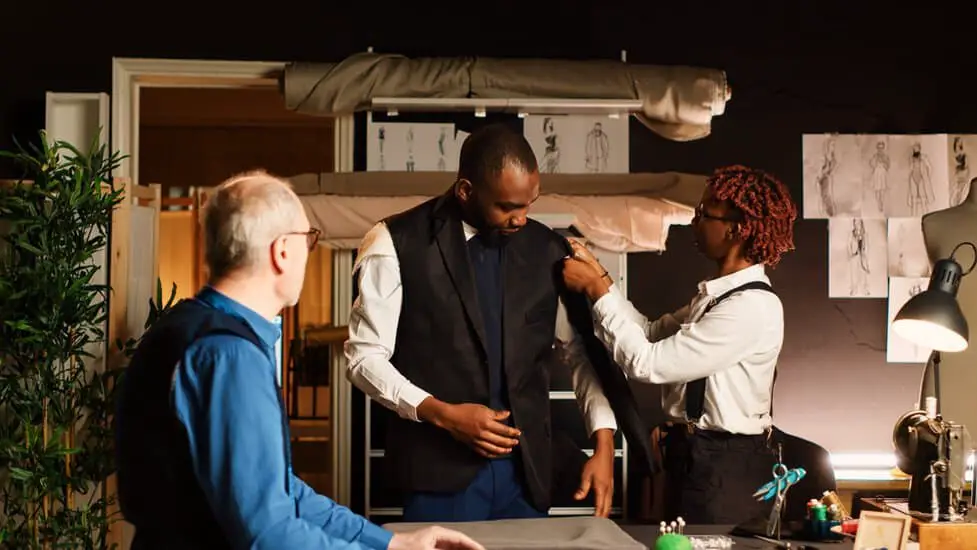
Measuring for a blazer requires precision and, often, a friend’s help. To determine chest size, measure around the fullest part of the chest, under the armpits, and over the shoulder blades, keeping the tape measure level and firm.
The length of the blazer can be deduced by taking note of your height and checking the corresponding length category. It’s also important to consider the fit in other areas, including shoulders, sleeves, and waist. For a flattering look, the blazer should contour to the natural shape of the body without being too tight or too loose.
Key Takeaways on What Size Blazer Am I?
- Chest measurement and blazer length are key to finding the right size.
- Accurate measuring is required for a well-fitted blazer.
- The fit should be contoured but comfortable across all areas.
You also don’t want to miss out on these other most sought posts:
- How to Wear Crop Blazer
- Why Do Blazers Have Shoulder Pads?
- What to Wear With Tan Blazer
- Camel Blazer Outfit Ideas
Understanding Blazer Sizes
When selecting a blazer, understanding your size is crucial to ensure a proper fit. Consider both the chest measurement and the length indicated by the size for the best fit.
Men’s Blazer Size Chart
To determine your blazer size, use a Men’s Blazer Size Chart. This chart correlates your chest measurement to the correct jacket size.
For instance, if I measure 42 inches around my chest, my jacket chest size and blazer size would logically be 42. However, some charts suggest choosing a blazer size that’s one size smaller for a more tailored fit. It’s essential to check specific brand size guides as sizes can vary between manufacturers.
Letter vs. Number Sizing
Blazer sizes can come in numbers, which represent the chest measurement, but there’s also a letter that indicates the length – ‘S’ for short, ‘R’ for regular, and ‘L’ for long. This letter is crucial because it determines the overall fit on your body.
For example, someone who is 6’2″ with a chest measurement of 40 inches would likely need a size 40L, while I, at 5’9″, would opt for a 40R. Here’s a simple way to remember it:
- S: Short
- R: Regular
- L: Long
The right-sized blazer not only fits well across the chest but also has sleeves and a body length that sits right for your height.
Measuring for the Perfect Fit
When selecting a blazer, ensure that measurements are precise to guarantee an impeccable fit. Acquiring these measurements is a simple process that requires a tailor’s measuring tape and a little bit of know-how.
Chest Measurement
To determine your chest size, wrap the measuring tape around the fullest part of your chest, making sure it runs under my armpits and across my shoulder blades. It’s crucial to keep the tape level and snug, but not tight. For instance, if the measuring tape reads 42 inches, then your blazer size is 42.
Shoulder Width
A blazer that fits well in the shoulders is essential. Locate the shoulder seam, which should align with the edge of your shoulder bone, for a natural-looking fit. I measure from one shoulder seam to the other, across the back. This measurement ensures that the blazer aligns properly with my body’s structure.
Sleeve Length
Measure sleeve length starting from the shoulder seam down to the point where you want the sleeve to end, typically around the wrist bone. The correct sleeve length is important—as sleeves that are too short or too long can disrupt the blazer’s overall appearance. Ensure there’s about a quarter to a half inch of my shirt cuff showing.
Selecting the Right Style
When it comes to choosing the right blazer, style goes beyond mere aesthetics. It’s about finding the perfect harmony between cut, function, and the versatility of outfits.
The Impact of Cut
The cut of a blazer greatly influences not only fit but also the overall look and feel. A well-tailored cut can accentuate your physique, making your appearance sharp and polished. Blazers come in various cuts such as slim, classic, and modern fit, each catering to different body shapes and preferences.
Suit Jacket vs. Sport Coats
Distinguishing between a suit jacket and sport coats is crucial in my selection. Suit jackets are typically matched with corresponding trousers and offer a more formal appearance.
On the other hand, sport coats are designed to be worn without matching pants, often featuring bolder patterns and a slightly looser fit for a smart yet casual feel.
Versatility of Outfits
I prioritize versatility when selecting a blazer. A versatile coat can seamlessly transition from a business meeting to a casual dinner. Neutral colors and classic styles provide the most versatility, allowing me to pair the blazer with multiple outfits.
Consider versatility a key factor in a cost-effective wardrobe, ensuring you can wear the blazer in various contexts and with an array of different ensembles.
Fit and Comfort Considerations
When I consider a blazer for my wardrobe, two critical factors I focus on are its fit and comfort. A well-fitted blazer not only enhances my appearance but also ensures I can move freely without restriction.
Range of Motion
Range of motion is paramount when selecting a blazer. The seam of the blazer should align with the edge of your shoulders, providing a natural fit without slipping or bunching. You can test this by extending your arms and mimicking motions like reaching or hugging. This makes sure the sleeves don’t ride up too much, and the back of the blazer doesn’t pull tight.
Room for Layering
Additionally, the blazer should have enough extra fabric to allow for comfortable layering. Always check this by wearing a shirt or sweater underneath when trying on a blazer. Look for a fit that allows for about 1.5 to 2 inches of room around the waist, ensuring you can button it without the fabric pulling. I
If the blazer’s fit is a bit off, tailoring is a valuable option for customizing its fit to your body measurements, particularly for perfecting the space around the chest and waist for optimal comfort.
Important Details to Look For
Pay attention to a few critical design features that ensure a polished and tailored look. These features include the placement of buttons, the proportion of lapels, and the alignment of pockets.
Button Placement
The buttons on a blazer should align with your natural waist, giving the blazer structure and shape. For a two-button blazer, the top button is typically at the navel or slightly above. The bottom button should never be fastened, as it allows the blazer to drape nicely and offers better movement.
Lapel Proportion
Blazer lapels should be in proportion to your body size and the width of the tie you plan to wear. Thinner lapels can look more modern, but wider lapels can add a sense of power to the blazer. Ensure the lapel width complements the shoulder fit of the blazer and doesn’t overwhelm your frame.
Pocket Alignment
Pockets should lie flat against the blazer. This means the pocket alignment needs to be straight and in harmony with the blazer’s cut. Pockets that bulge or pucker can indicate a poor fit. The breast pocket, often used for handkerchiefs, should be positioned over my heart, while lower pockets should follow the line of my hip.
The Role of Sleeve and Waist Length
Finding the right fit in a blazer is key to ensuring a sharp and tailored look. I’ll discuss how sleeve and waist lengths play a pivotal role in achieving this.
Finding the Right Sleeve Fit
The proper sleeve length of a blazer is critical as it can impact the overall appearance of the garment. I’ve learned that a sleeve should end about a half-inch above the hinge of my wrist, allowing for a small portion of my shirt cuff to be visible.
This is a hallmark of a well-fitted blazer. While sleeve length is often categorized as short, regular, or long, finding the right one involves precise measurements from the shoulder seam to the wrist.
Waist and Jacket Length Correlation
The waist measurement determines how snugly the blazer will fit around my body. Typically, I ensure 1.5-2 inches of space where the blazer buttons around the waist to avoid any undesirable tightening..
The jacket length should correlate with the waist fit to create a balanced silhouette. The length at the back should be enough to cover my seat, touching the base of my palm when my arms are at my sides. This ensures that the blazer is neither too long nor too short, maintaining a polished and proportionate look.
Dressing for Different Body Types

Selecting the right blazer for your body type is crucial. Focus on style and fit to achieve a well-proportioned look that flatters your physique. Let’s consider key factors for different statures.
For Shorter Stature
When dressing a short stature, opt for blazers with a fit that creates an elongated silhouette. This means:
- Chest: A snug, not tight, fit around the chest.
- Waist: Tapering at the waist to enhance your natural shape.
- Length: A blazer that ends around mid-seat to avoid looking swamped.
- Sleeves: They should end just above the hinges of your wrists, allowing for a quarter to half-inch of shirt cuff to show.
Tip: Choosing a blazer with a structured shoulder will give a strong silhouette, and opting for a single vent can add the illusion of height.
For Taller Frames
The approach to dressing taller frames emphasizes balance and proportion:
- Chest: Ensure the blazer fits comfortably, without gaping.
- Waist: The blazer should gently follow the contour of your natural waist.
- Length: Longer blazers work well; Aim for the hem to cover the seat completely.
- Sleeves: They should reach your wrists, but avoid excess fabric that can look unkempt.
Note: To keep a taller body in proportion, choose blazers with two vents, which accommodate a longer torso and provide ease of movement.
Accessorizing Your Blazer
When selecting accessories for a blazer, focus on achieving a polished and cohesive look that speaks to your personal style. The right dress shirt, pants, and waistcoats are crucial to elevating the overall outfit.
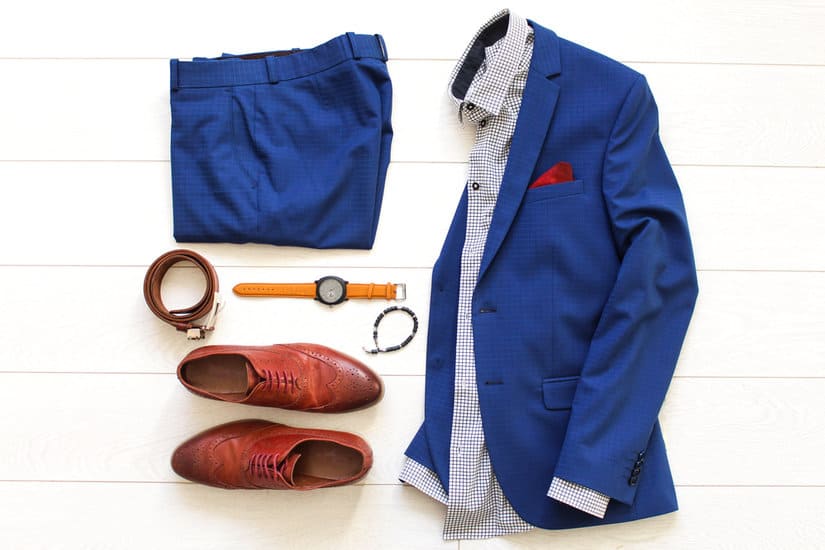
Choosing the Right Dress Shirt
The first step in complementing my blazer is choosing a dress shirt. It’s essential to consider the color and pattern of the blazer when selecting my shirt. For a classic style, I prefer a crisp white dress shirt which allows more versatility in pairing with different blazers.
If I opt for a patterned blazer, a solid-colored shirt typically works best to avoid clashing. Conversely, a patterned shirt can add depth to a solid-colored blazer, provided the patterns do not compete for attention.
- Shirt Fit: Ensure the shirt fits well, especially around the waistband and cuffs.
- Collar Style: Choose a collar that complements the lapel width and style of the blazer.
Selecting Pants and Waistcoats
Coordinating the right pants is just as important to creating a coherent style. Your dress pants should neither be too tight nor too loose, maintaining a seamless transition from the blazer. The pant size and cut should cater to my body type and the occasion. With waistcoats, ensure:
- Fabric Coordination: The waistcoat fabric is in harmony with my blazer, either by matching or tastefully contrasting it.
- Color Palette: The colors of my pants and waistcoat should complement each other and the blazer for a unified look.
By paying attention to these details, you will have an outfit that’s well-coordinated and stylish, ensuring your blazer displays its full potential.
Tailoring for the Ultimate Fit
To ensure my blazer fits as though it were made just for me, I know that visiting a tailor for custom adjustments is a critical step. A well-tailored blazer can greatly enhance my appearance, providing a polished and professional look.
When to Visit a Tailor
Immediately after purchasing a blazer, make it a point to visit a tailor, especially if the off-the-rack fit doesn’t compliment your body measurements. Seek professional tailoring when the blazer’s shoulders aren’t sitting right, or if the length of the sleeves and the overall body require modification.
Only a tailor can assess your chest measurement and body measurements precisely, ensuring the blazer conforms to your natural shape.
Adjustments Worth Making
The areas to focus on for alterations include:
- Shoulders: Ensuring the seam sits perfectly at the shoulder’s edge is key; an incorrect fit affects the entire structure of the blazer.
- Chest & Waist: There should be enough room to move comfortably with about 2-3 inches of space in the chest and a proper fit around the waist for a streamlined silhouette.
- Sleeve Length: Full sleeves should end at the wrist bone. Occasionally, I prefer them a little shorter to showcase my watch or cufflinks.
- Blazer Length: Tailoring the length for a balanced look is important, making sure it’s just right for my height.
- Pant Waist Size: If my blazers come with pants, the pant waist size might need adjusting for a perfect fit.
Dressing for the Occasion
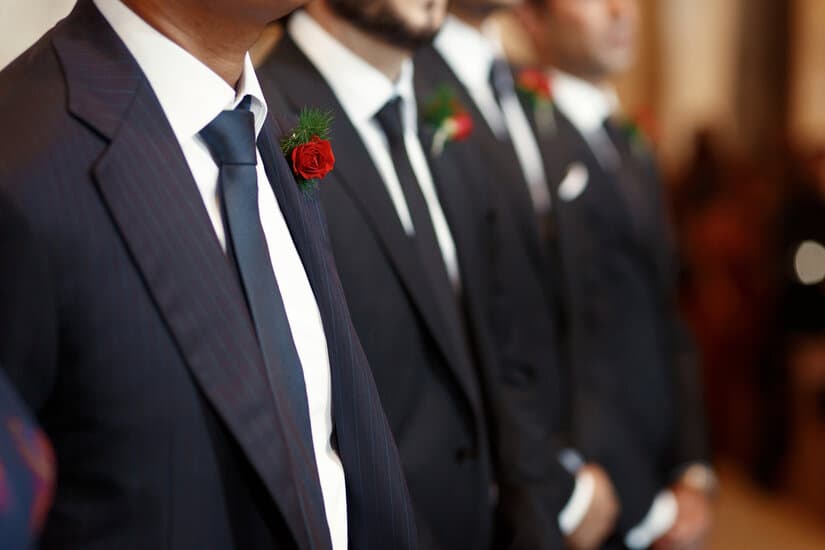
When selecting a blazer for an event, I keep in mind both the fit and formality. It’s crucial to choose a style that complements the nature of the occasion to strike the right balance between comfort and convention.
Business Casual vs. Formal
Business casual settings require a blazer that offers both professionalism and relaxation. The perfect fit for this dress code involves a blazer that’s not too snug, allowing for roughly 2 inches of space around the waist. A single-breasted cotton or linen blazer, in subdued colors like navy or grey, serves the purpose well, sitting comfortably on the body for a smart but relaxed look.
For formal occasions, the blazer should adhere to a more structured style. Ensure there’s no more than 3 inches of room in the chest area to maintain a tailored silhouette. A double-breasted blazer in a dark, solid color conveys a sharp, elevated formality necessary for such events. The fabric matters too; opt for wool or a wool-blend for that refined touch.
Outfit combinations differ significantly between the two. With business casual, I’d pair my blazer with chinos or dark denim, layering over a button-down or even a high-quality t-shirt. Formal settings call for dress pants and a crisp dress shirt, potentially with a tie or pocket square as complementary outerwear.
Maintaining Your Blazer
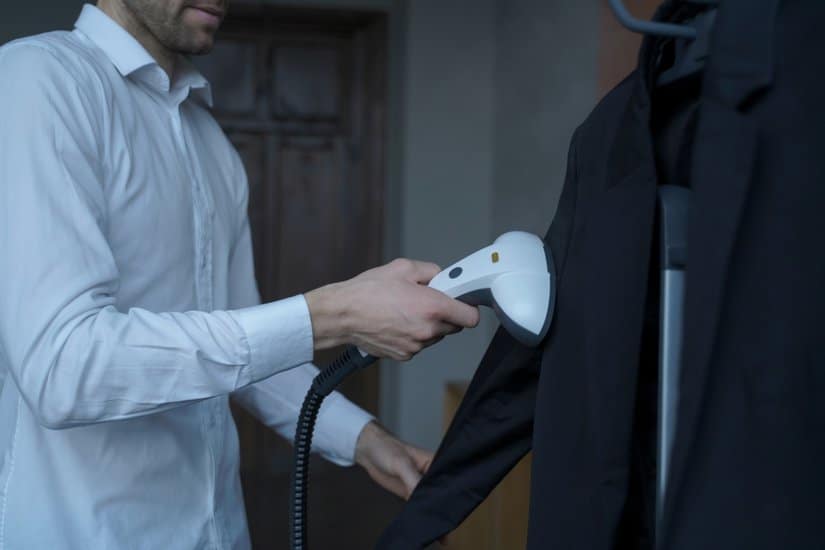
When it comes to a blazer, ensuring longevity and pristine condition is all about proper storage and attentive care. Handle any small repairs promptly and keep your blazers clean through regular maintenance.
Storage and Care
Always hang blazers on a wide, padded hanger to maintain its shape; wire hangers are a no-go as they can distort the shoulders. To prevent dust, I either use a garment bag or keep it in a space with good airflow.
For fabric care, I adhere closely to the label’s instructions—dry cleaning is often preferred, but for those made with natural fibers like wool, sometimes just airing them out is enough to refresh the material.
- Proper Hanging: Padded hanger
- Dust Prevention: Garment bag or ventilated space
- Fabric Care: Follow label instructions, dry clean or air out as necessary
Minor Repairs and Cleaning
As soon as you notice a loose thread or a button that’s about to give way, always address it. I keep a small sewing kit for these quick fixes. For cleaning, I spot clean any blemishes as soon as possible to prevent setting in. When using any cleaning agent, first test it on an inconspicuous area first. Regular brushing with a soft-bristled clothes brush keeps the fabric looking fresh and can help extend periods between dry cleanings.
- Sewing Kit: For loose threads and buttons
- Spot Cleaning: Immediate action with gentle cleansers
- Regular Brushing: Soft-bristled brush for fabric upkeep
Frequently Asked Questions
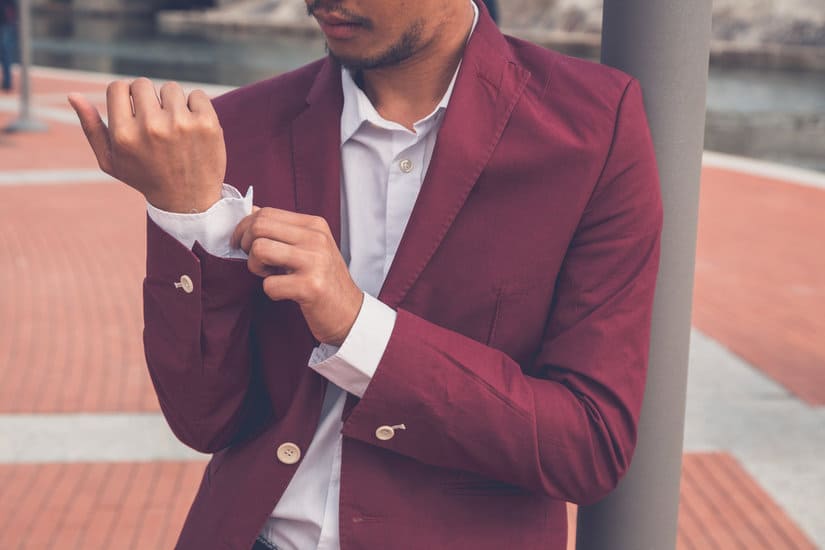
How do I measure my chest for the correct blazer size?
To measure your chest, wrap a tape measure around the fullest part of the chest, just under your armpits, and make sure the tape is flat across the back for an accurate reading.
What does a size 40 blazer correspond to in measurements?
A size 40 blazer generally corresponds to a chest measurement of 40 inches. A size 40 blazer indicates that it’s designed for a person with that chest size. Tailoring advice for varying body sizes may be available on fashion websites, for instance, the information provided on ASOS.
How can I determine my blazer size if the tag is missing?
If the tag is missing, you can measure a well-fitting blazer you own from one armpit to the other, across the back just below the shoulders, and then double this measurement to find the chest size.
What are the typical blazer size specifications for a man who is 6 feet 2 inches tall?
For a man who is 6 feet 2 inches tall, I’d look at long or tall size specifications, which usually accommodate longer arms and torso. The specific dimensions might vary by brand, however, some size charts, such as the one on Size-charts.com, can help with the typical measurements.
Can you explain how suit jacket sizes correspond to actual body measurements?
Suit jacket sizes correspond to chest dimensions; for example, a 42-inch jacket size means that it is intended for a man with a 42-inch chest. The rest of the measurements should align proportionately, but it’s also important to consider overall fit including shoulders and waist.
What should I know about the differences between men’s and women’s blazer sizing?
Men’s blazers are typically sized according to chest measurements, while women’s blazers may incorporate bust, waist, and hip measurements for sizing. Men’s sizes are often numbered, like 38, 40, 42, whereas women’s blazers can be numbered or follow the standard S, M, L sizes. Understanding the sizing system is vital when transitioning between the two.

Samoel Ovanessian is the founder and creator of StylishAlpha.com – a website dedicated to men’s fashion. As a proud owner of more than 200 ties, he loves digging through new clothing combinations for everyday use, formal events and even just for fun. You can read more about Samoel here.

